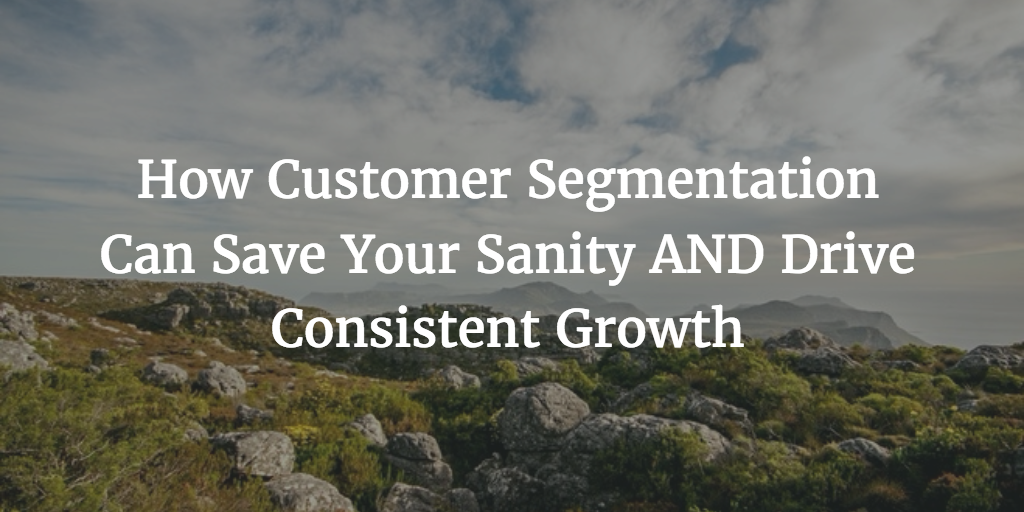This blog is the second of five based on anonymized discussions from CCO Summit 2016. Read the first here.
One of the biggest factors that has led to the explosion of the Customer Success movement is the growing recognition that there’s no one-size-fits all strategy for meeting your customers’ needs. As you get to know your customers, you’ll find they each have different personalities, budgets, levels of engagement: that’s obvious. Each customer could conceivably use your product in drastically different ways.
In a perfect world, you’d be able to engage every one of them with a custom solution. Unfortunately, it will never be cost-effective to offer bespoke software for all of your customers and you’ll never have the resources for a one-to-one ratio of CSMs to clients. At CCO Summit 2016, one Chief Customer Officer at a large company was extremely proud of achieving a 25:1 ratio. Depending on the size of your organization, you could be fighting to get down to 100:1 or even higher.
Customer Success isn’t like Sales. You can’t just close a customer and move on. As a CSM, that’s 25, 100 or even 200 plates you need to keep spinning day-over-day, year-over-year. You’ll have a nervous breakdown if you don’t figure out how to separate them into tiers. Once you break them into smaller pieces, you’ll find them way easier to handle.
In a word, that’s segmentation.
But segmentation isn’t just about ripping your problems apart, or even just an efficient operational approach to Customer Success. It’s the key to growing your recurring revenue by moving your clients up the ladder. One of the big takeaways from CCO Summit 2016 is that everyone in the field is thinking about segmentation. How each company does it was the subject of much discussion.
Our VP of Customer Success & Business Operations Allison Pickens wrote a great guide on how to segment your customers. It’s based on what we learned about segmentation at Gainsight.
At CCO Summit 2016, two of the presentations that had Customer Success execs furiously taking down notes had to do with the segmentation strategies. The presenters, a Chief Customer Officer and an SVP of Customer Success, broke down how they chose to segment their customers to maximize success.
The first organization has six customer segments:
- Strategic
- Enterprise
- Channel
- Growth
- Maintenance
- Transactional/Self-serve
Generally, they range from extremely high-touch at the Strategic level to almost completely automated at the Transactional level. On top of that, customers are tiered according to growth potential. This company thinks strategically about how to channel customers up the chain. In fact, the CCO said that movement down the chain is extremely rare – they’re almost always moving up. Using this model, they’ve been able to reach a ratio of 20 Strategic Accounts per CSM or 250 Maintenance Accounts per CSM.
There are so many factors that go into sorting customers, you might think you need the Sorting Hat from Harry Potter to figure it out. But this company has six (mostly objective) levers they use to organize their clients:
- Beginning ARR
- License usage/key events
- Perceived TAM
- Brand influence
- Market stage
- Just because
As you can see, there’s no way to eliminate a CSM’s gut feeling about a client from the judgment process – nor should you try to! The levers are there to guide your decision-making, not replace it. And there’s no one-size-fits all solution for your segmentation, either. For example, the other presenter’s organization uses a three-tier model:
- Strategic (Fortune 200)
- Enterprise (Fortune 1000)
- Corporate ($1 billion+ revenue)
At the Strategic Level, clients are demanding almost entirely custom products. At the Corporate Level, it’s almost entirely packaged solutions. What’s interesting about this model is that it allows the company to charge not just for a custom product, but a custom Customer Success component.
For their biggest clients, this company offers a custom-built onboarding process and Premier Plus Customer Success. That means the client has access to both a CS Advisor and a CS Engineer. Each Premier Plus Advisor handles seven accounts, and each Engineer handles only six.
Not all customers necessarily want such a high-touch relationship. This company has found that its Enterprise Level clients tend to be more self-sufficient. Enterprise CSMs here each handle 25 clients.
How many tiers you create is completely up to you and your team of dedicated CSMs. But no matter what size company you have, it’s crucial to create a deliberate segmentation strategy. How you segment your customers informs everything about the relationship, which is the foundation of Customer Success.
Read more about how to reach the full potential of those relationships.
